Roofing Companies Purton
Best Roofing Companies in Purton
Receive multiple Roofing Contractor quotes for your project today! Compare profiles, reviews, accreditations, portfolio, etc... and choose the best service.
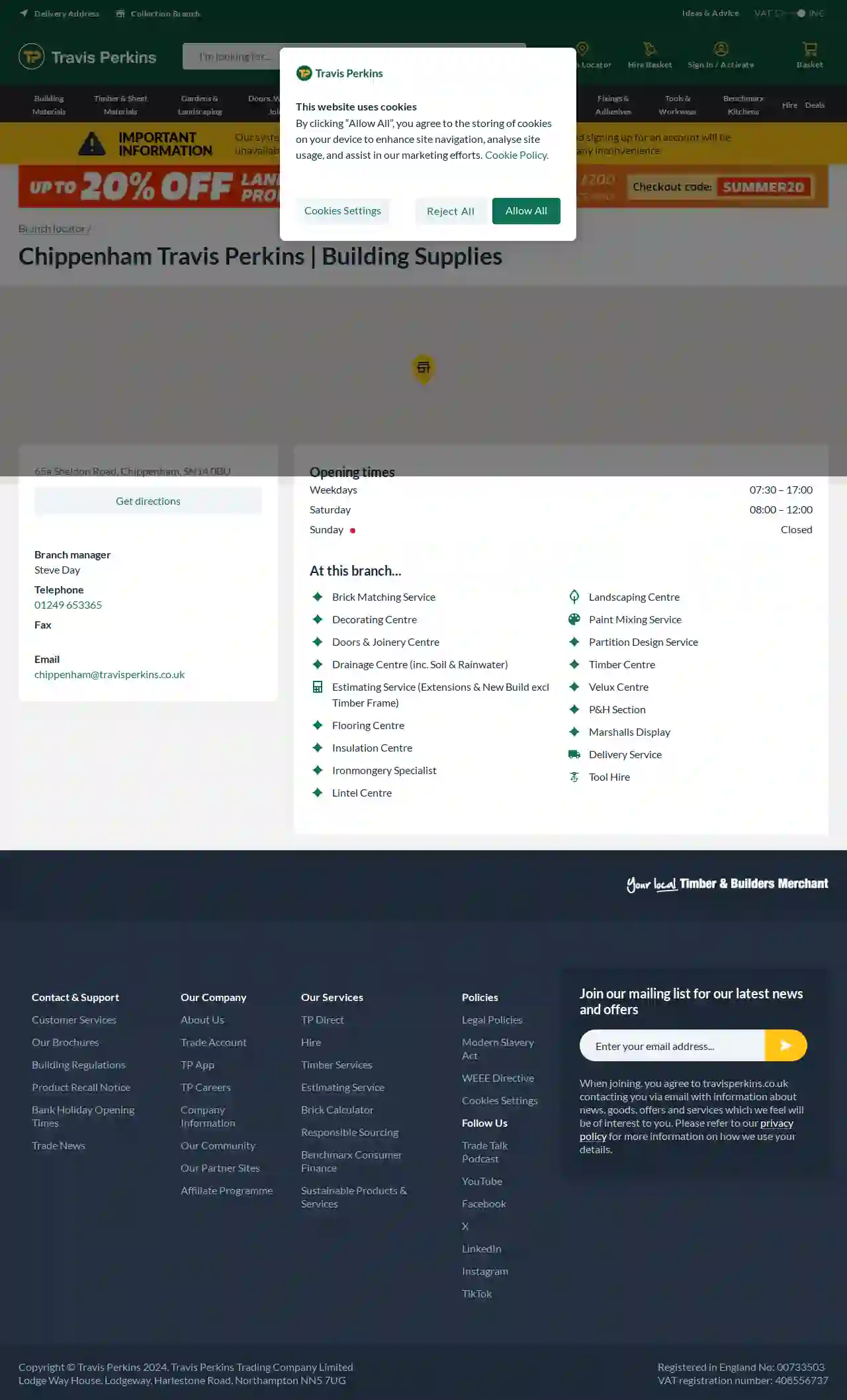
Travis Perkins
4.150 reviewsNorthampton, NN1 5AN, Unit 1, Northampton Road, GBAt Travis Perkins, we're a leading supplier of building materials and home improvement products. With over 600 stores across the UK, we're committed to providing our customers with the best possible service and products. Our extensive range of products includes building materials, tools, and home improvement products, as well as a wide range of services to help you get the job done. Whether you're a professional builder or a DIY enthusiast, we've got everything you need to get the job done.
- Services
- Why Us?
- Accreditations
- Our Team
- Testimonials
Get Quote
TES ROOFING LTD
4.622 reviews18 St Athan Close, Melksham, SN12 6XP, GBWiltshire’s Premier Flat Roofing Company. Flat roof & tile experts: TES Roofing Ltd, based in Melksham, Wiltshire, offer a full range of services that include: Flat roof and UPVC replacement Traditional slate and tile roofing Roofing repairs to full re-roofs We offer a unique 24hr emergency call out service. 30 year Guarantee Fully certified for EPDM Fully certified for SBS TORCH ON FELT QUALITY MATERIALS All materials used on our roofs are of high grade and conform to the latest BS Safety regulations. EXPERIENCED TRADESMEN Established by Tom Salter in 2017, we have a combined knowledge of over 30 years in all aspects of roofing. NO HIDDEN EXTRAS TES arrive on time, stay on budget and complete jobs within the agreed time frame. WORKMANSHIP FIRST All new roofs are covered with a 10 year guarantee and 30 years for EPDM and SBS TORCH ON FELT. COMPETITIVE PRICING Our prices are competetive and we will always do our best to beat any geniune written quote. LATEST TECHNOLOGY We embrace new and proven technologies. All liquid rubber and fibreglass roofs feature long warrantys.
- Services
- Why Us?
- Accreditations
- Our Team
- Testimonials
- Gallery
Get Quote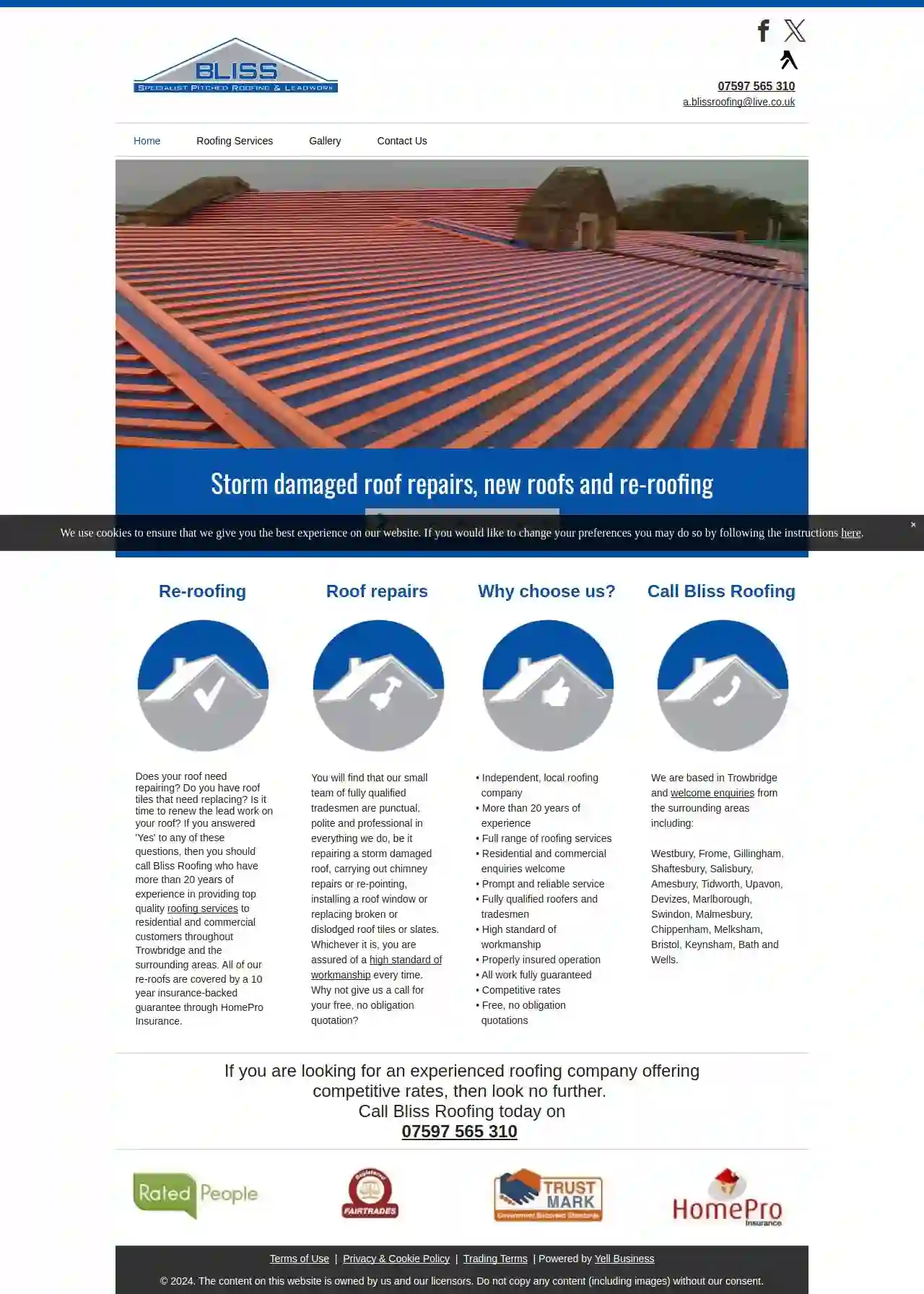
Bliss Roofing
516 reviews50 Corbin Road, Trowbridge, BA14 7FN, GBCall us for storm damaged roof repairs, new roofs and re-roofing. Get a quote for roofing work. Re-roofing Does your roof need repairing? Do you have roof tiles that need replacing? Is it time to renew the lead work on your roof? If you answered 'Yes' to any of these questions, then you should call Bliss Roofing who have more than 20 years of experience in providing top quality roofing services to residential and commercial customers throughout Trowbridge and the surrounding areas. All of our re-roofs are covered by a 10 year insurance-backed guarantee through HomePro Insurance. Roof repairs You will find that our small team of fully qualified tradesmen are punctual, polite and professional in everything we do, be it repairing a storm damaged roof, carrying out chimney repairs or re-pointing, installing a roof window or replacing broken or dislodged roof tiles or slates. Whichever it is, you are assured of a high standard of workmanship every time. Why not give us a call for your free, no obligation quotation? Why choose us? Independent, local roofing company More than 20 years of experience Full range of roofing services Residential and commercial enquiries welcome Prompt and reliable service Fully qualified roofers and tradesmen High standard of workmanship Properly insured operation All work fully guaranteed Competitive rates Free, no obligation quotations Call Bliss Roofing We are based in Trowbridge and welcome enquiries from the surrounding areas including:Westbury, Frome, Gillingham, Shaftesbury, Salisbury, Amesbury, Tidworth, Upavon, Devizes, Marlborough, Swindon, Malmesbury, Chippenham, Melksham, Bristol, Keynsham, Bath and Wells. If you are looking for an experienced roofing company offering competitive rates, then look no further. Call Bliss Roofing today on 07597 565 310
- Services
- Why Us?
- Accreditations
- Gallery
Get Quote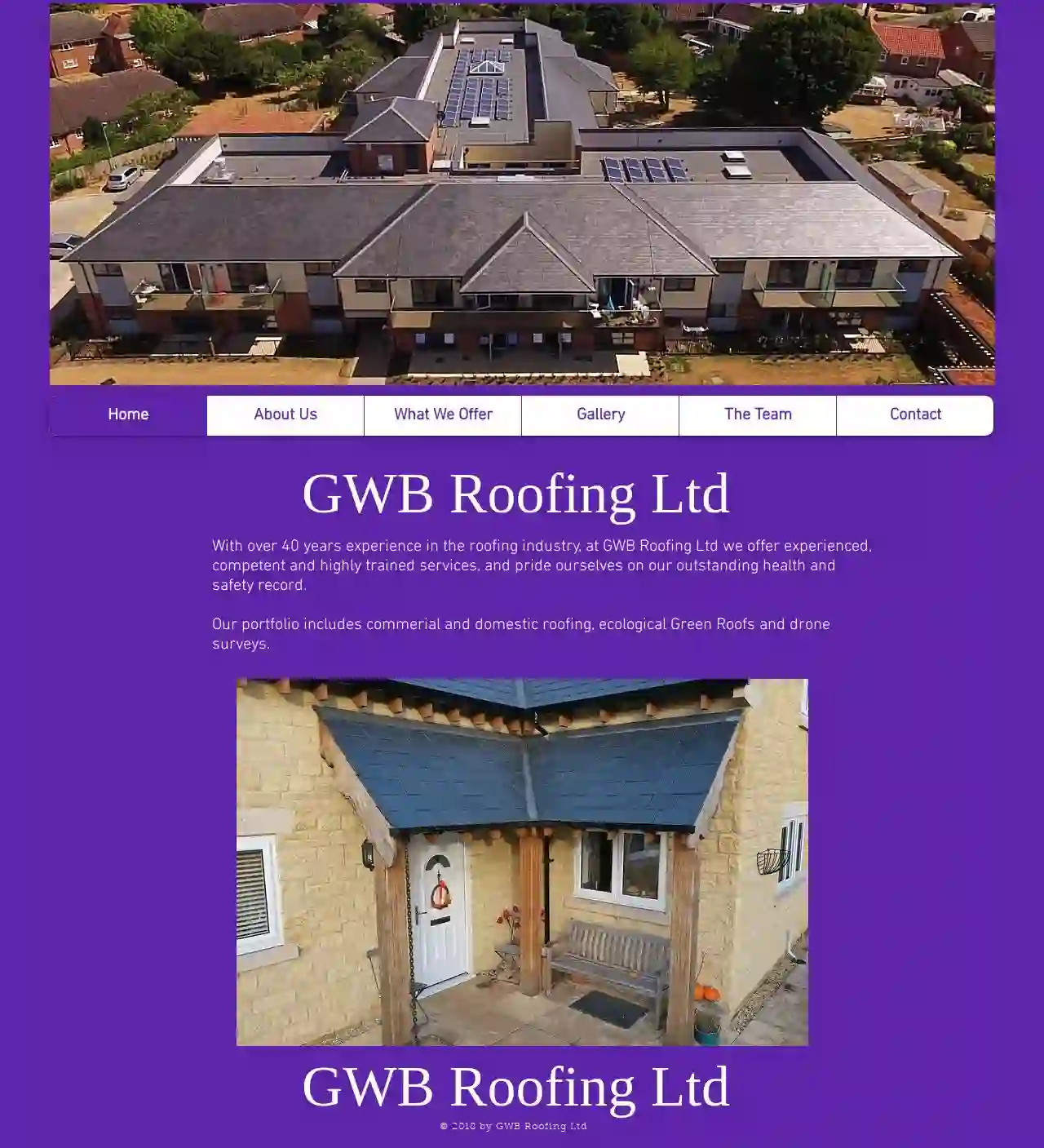
G W B Roofing Ltd
4.86 reviewsChippenham, GBWith over 40 years experience in the roofing industry, at GWB Roofing Ltd we offer experienced, competent and highly trained services, and pride ourselves on our outstanding health and safety record. Our portfolio includes commerial and domestic roofing, ecological Green Roofs and drone surveys.
- Services
- Why Us?
- Gallery
Get Quote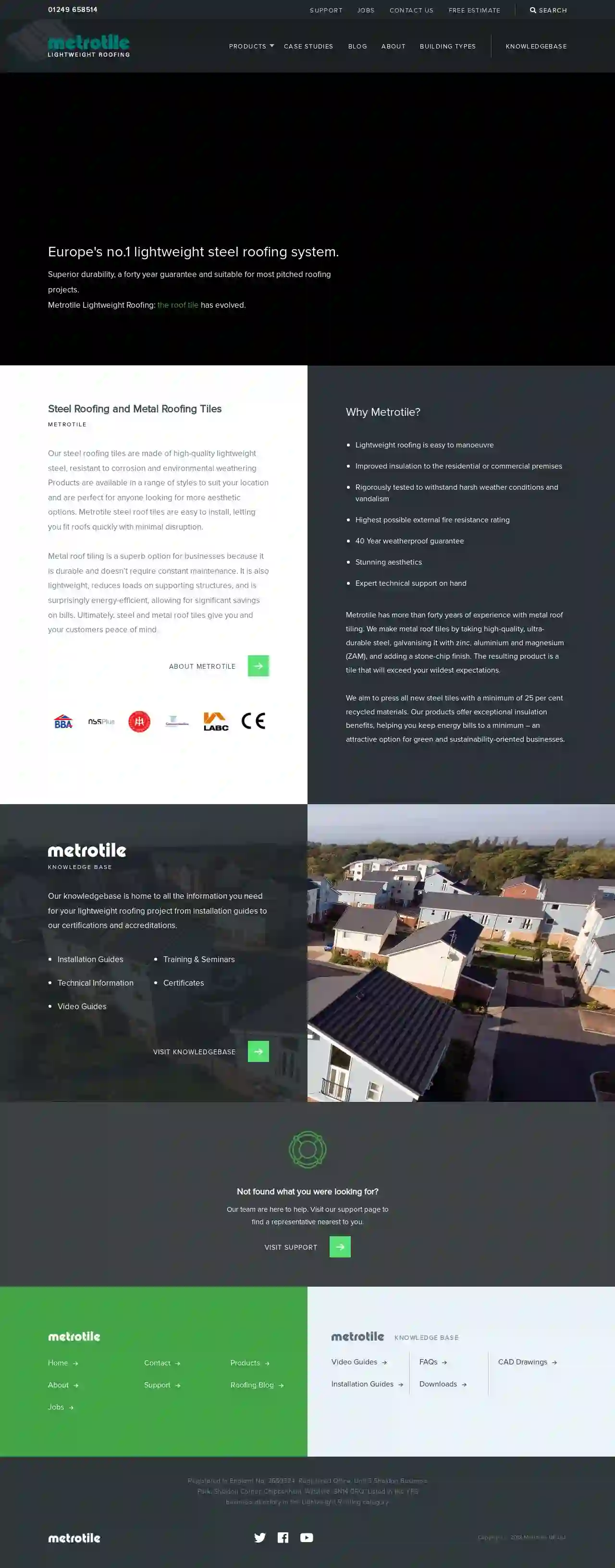
Metrotile UK Ltd
4.213 reviewsGBMetrotile is Europe's leading provider of lightweight steel roofing systems. Our steel roof tiles are renowned for their superior durability, a forty-year guarantee, and suitability for a wide range of pitched roofing projects. We've revolutionized the roofing industry with our innovative lightweight steel roofing solutions. Our high-quality steel roof tiles are crafted from corrosion-resistant and weather-resistant materials. We offer a diverse range of styles to complement any architectural design, making Metrotile the perfect choice for those seeking both aesthetic appeal and functionality. The ease of installation of our steel roof tiles allows for quick and efficient roofing projects with minimal disruption. Choosing metal roof tiling offers numerous advantages for businesses, including exceptional durability, reduced maintenance requirements, and lightweight construction that minimizes stress on supporting structures. Furthermore, our steel roof tiles are surprisingly energy-efficient, leading to significant savings on energy bills. With Metrotile, you and your customers can enjoy peace of mind knowing they have a reliable and long-lasting roofing solution. At Metrotile, we have over forty years of experience in the metal roofing industry. Our process involves using high-quality, ultra-durable steel, galvanizing it with zinc, aluminium, and magnesium (ZAM), and applying a stone-chip finish. This meticulous process results in a tile that surpasses expectations in terms of performance and aesthetics. We are committed to sustainability and aim to incorporate a minimum of 25% recycled materials in all new steel tiles. Our products provide exceptional insulation benefits, helping you reduce energy consumption and contribute to a greener environment. This makes Metrotile an attractive choice for businesses prioritizing environmental responsibility. Metrotile is dedicated to providing comprehensive support to our customers. Our knowledge base is a valuable resource, offering a wealth of information on lightweight roofing projects, including installation guides, certifications, and accreditations. For personalized assistance, our team of experts is readily available to provide technical support and guidance.
- Services
- Why Us?
- Accreditations
- Our Team
- Testimonials
- Gallery
Get Quote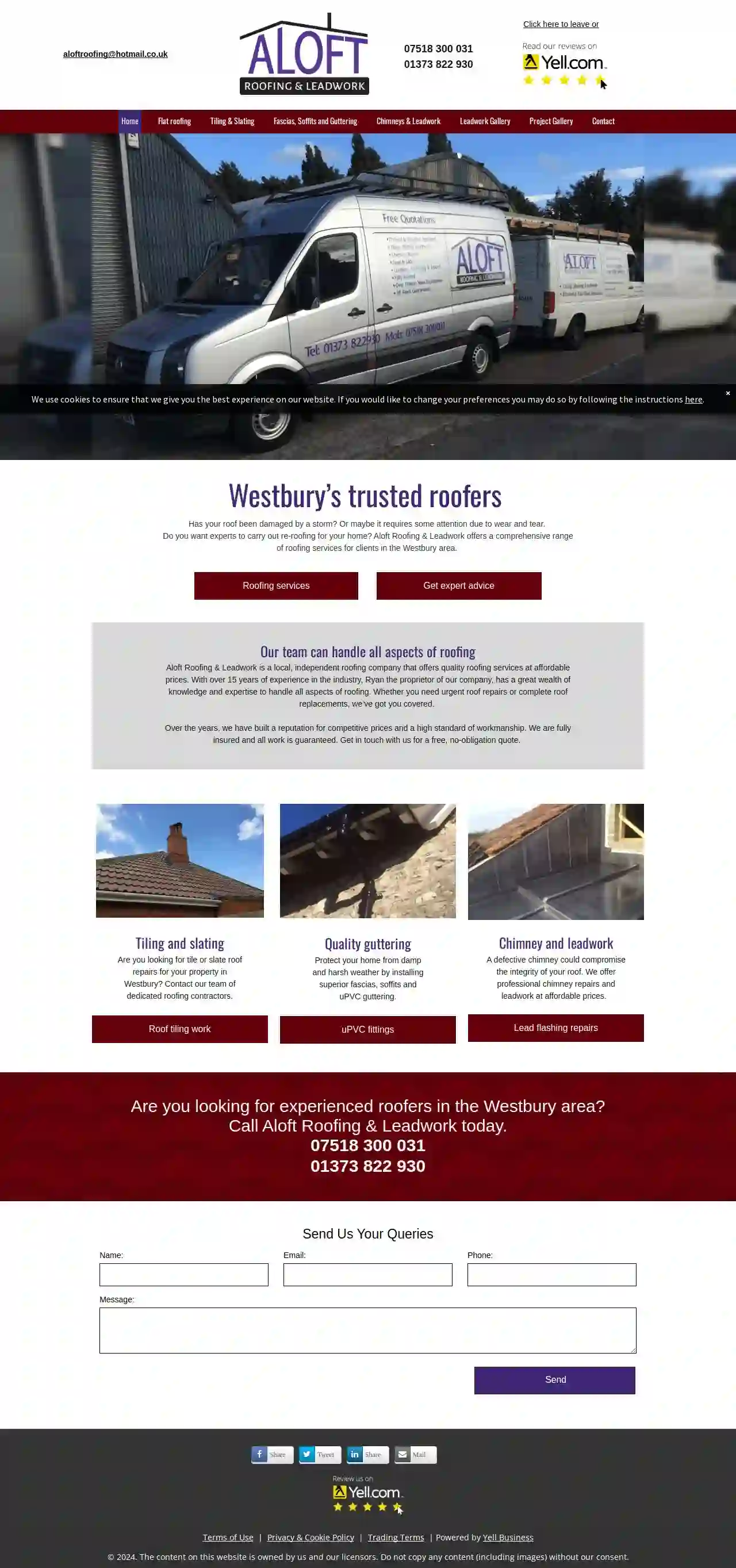
Aloft Roofing & Leadwork
55 reviews9 Penwood Close, Westbury, BA13 3LW, GBAloft Roofing & Lead Work is a well-established roofing firm based in Westbury. Our team of roofers offers a wide range of roofing services including tiling, chimney repairs, roof replacements and more. With over 15 years of experience in the trade, we have built a reputation for honest work and competitive prices. All the work carried out by our contractors is fully insured and guaranteed. Get in touch with our experts for a free quote and unbiased advice.
- Services
- Why Us?
- Our Team
- Gallery
Get Quote
R M H Roofing Ltd
45 reviewsLacock, Chippenham, 5 Bowden Hill, SN15 2PW, GBWelcome to RMH Roofing Ltd, Lacock. A roofing company skilled in the following... COMPLETE RE-ROOF, Fitting new felt, with new tiles, COMPLETE RE-ROOF, Fitting new felt, with original tiles or combination of new and original tiles, CHIMNEY STACKS, Repointing and lead work, LEAD FLAT ROOFS AND ROOFS REQUIRING EDM RUBBER, NEW BUILD PROJECTS, Roofing and leadwork, ASBESTOS, Testing and removal of asbestos cement fibre slates (pre 1990s), RENOVATION PROJECTS, Re-roofing and leadwork, Repairs Only, LISTED BUILDING, Re-roofing and leadwork, ARCHITECTS & SURVEYORS, Confident to work with professionals and do so on a regular basis. You’ve Come to the right company. Company History: A Local and reliable roofing company, RMH Roofing Ltd based in Lacock, Wiltshire was founded by Richard Heath, Managing Director in 1990 and over the years, has developed a wealth of knowledge on all types of roofing projects, from slate to stone, from new to old, he is highly regarded for his sound and honest assessment of the work required to resolve a roofing issue. So you’re in safe hands with him and his highly skilled team of craftsmen, including 2 skilled specialists in leadwork.
- Services
- Why Us?
- Testimonials
- Gallery
Get Quote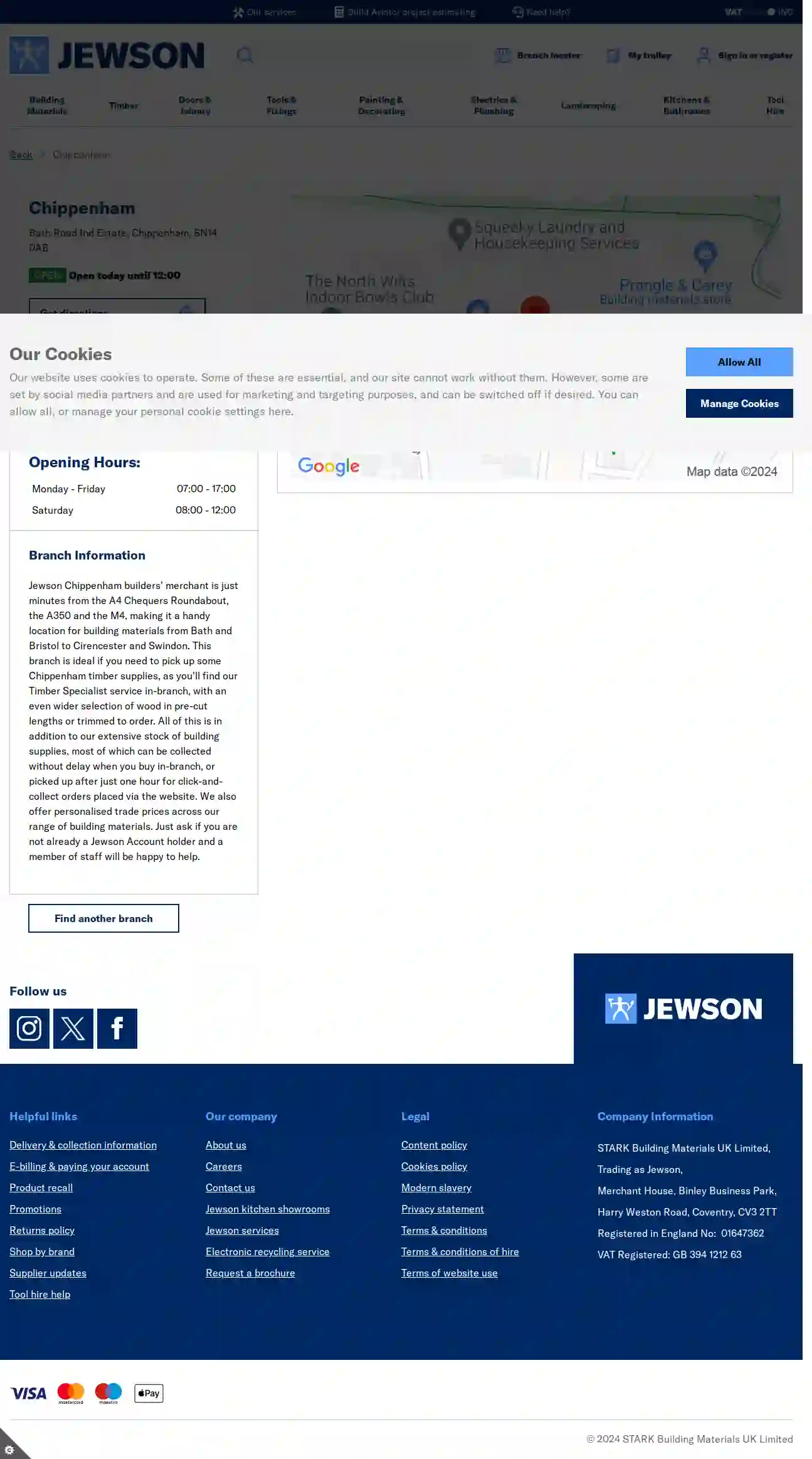
Jewson Chippenham
3.813 reviewsMerchant House, Binley Business Park, Coventry, CV3 2TT, GBJewson is a leading supplier of building materials, with a wide range of products and services to help you build, maintain, and improve your home or business. With over 600 branches across the UK, we're committed to providing excellent customer service and supporting our customers every step of the way.
- Services
- Why Us?
- Accreditations
- Gallery
Get Quote
Noble Building & Roofing
32 reviewsUnit 6, Poplar Tree Lane, Southwick, BA149NB, GBWe are committed to providing quality service and work! Here at Noble Building And Roofing, we provide the highest quality home builds in the industry. We are committed to providing world-class roofing and building services, with the best materials and incredible attention to detail. Based in Southwick, Trowbridge, we offer a wide range of services from complete roofing builds to interior/exterior repair and renovations — no job is too big or too small. With our insurance backed guarantees, your work is guaranteed and will be covered even in the unlikely event that we are not here to do it. If you’re interested in our specialist roofing, building and refurbishment services give us a call on 07444 843 881 or 0800 303 2101 to chat with team of friendly professionals.
- Services
- Why Us?
- Testimonials
- Gallery
Get Quote
Slade Roofing Ltd
4.714 reviews1 Rowdeford Cottages St. Edith's Marsh, Bromham, SN15 2DL, GBSlade Roofing is a family-run business with over 30 years of experience providing high-quality roofing services in Chippenham, Devizes, and throughout Wiltshire. We are a well-established company with a team of skilled roofers dedicated to delivering exceptional results for every project. Our commitment to quality, affordability, and customer satisfaction has made us a trusted name in the industry. We offer a wide range of roofing services, including single-ply flat roofing, natural stone tile slating, and lead flashing. Whether you need a new roof installation, repairs, or maintenance, our team has the expertise and experience to handle it all.
- Services
- Why Us?
- Our Team
- Testimonials
- Gallery
Get Quote
Over 12,314+ Roofers onboarded
Our roofing pros operate in Purton and surroundings!
Roofyng.co.uk has curated and vetted the Best Roofers in and around Purton. Find a trustworthy contractor today.
Frequently Asked Questions About Roofing Companies
- Hot Climates: Opt for light-colored or reflective roofing materials to reduce heat absorption. Consider tile roofs for their thermal mass and heat resistance.
- Cold Climates: Ensure your roof has adequate insulation and ventilation to prevent ice dams and moisture buildup. Metal roofs can shed snow effectively.
- High-Wind Areas: Choose roofing systems with high wind ratings and properly installed hurricane straps or clips to enhance wind resistance.
- Areas with Heavy Rainfall: Ensure your roof has proper drainage and a waterproof membrane to prevent leaks.
What is the difference between a roofer and a general contractor?
Roofer: Specializes in roof installations, repairs, and replacements. They have expertise in roofing materials, techniques, and safety practices specific to roofing.
General Contractor: Oversees and manages entire construction projects, including hiring and coordinating subcontractors, such as roofers, electricians, plumbers, etc. They handle overall project planning, scheduling, and budgeting.
For roofing projects, it's generally best to hire a roofing contractor who specializes in roof work.
What is the difference between a roof overlay and a roof tear-off?
Roof Overlay: Installing a new layer of roofing material over the existing roof. It's less expensive and faster, but not always ideal.
Roof Tear-Off: Completely removing the existing roofing before installing a new one. More labor-intensive but allows for inspection and repairs to the roof deck.
A tear-off is typically preferred, but a roofing contractor can advise on the best approach for your situation.
What should I do with my old roof after replacement?
How do I choose the right type of roof for my climate?
What is the difference between a roofer and a general contractor?
Roofer: Specializes in roof installations, repairs, and replacements. They have expertise in roofing materials, techniques, and safety practices specific to roofing.
General Contractor: Oversees and manages entire construction projects, including hiring and coordinating subcontractors, such as roofers, electricians, plumbers, etc. They handle overall project planning, scheduling, and budgeting.
For roofing projects, it's generally best to hire a roofing contractor who specializes in roof work.
What is the difference between a roof overlay and a roof tear-off?
Roof Overlay: Installing a new layer of roofing material over the existing roof. It's less expensive and faster, but not always ideal.
Roof Tear-Off: Completely removing the existing roofing before installing a new one. More labor-intensive but allows for inspection and repairs to the roof deck.
A tear-off is typically preferred, but a roofing contractor can advise on the best approach for your situation.
What should I do with my old roof after replacement?
How do I choose the right type of roof for my climate?
- Hot Climates: Opt for light-colored or reflective roofing materials to reduce heat absorption. Consider tile roofs for their thermal mass and heat resistance.
- Cold Climates: Ensure your roof has adequate insulation and ventilation to prevent ice dams and moisture buildup. Metal roofs can shed snow effectively.
- High-Wind Areas: Choose roofing systems with high wind ratings and properly installed hurricane straps or clips to enhance wind resistance.
- Areas with Heavy Rainfall: Ensure your roof has proper drainage and a waterproof membrane to prevent leaks.